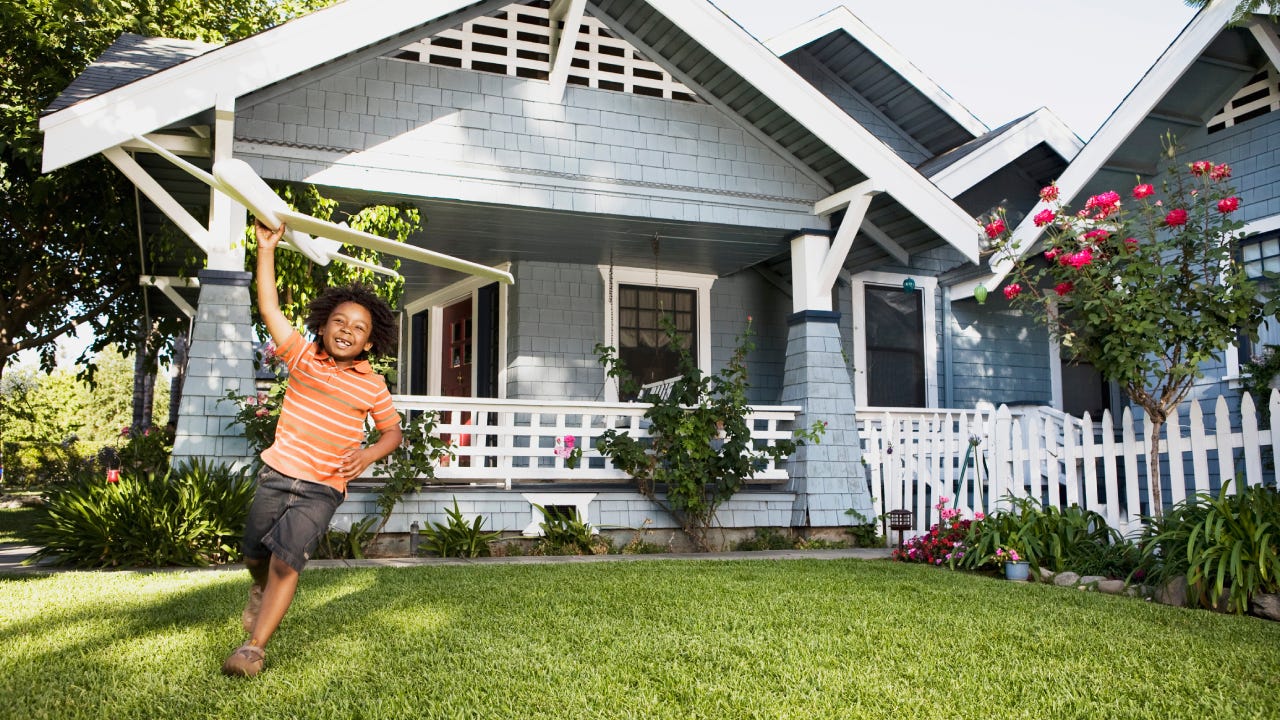Which states have the richest homeowners?

The Bankrate promise
At Bankrate we strive to help you make smarter financial decisions. While we adhere to strict , this post may contain references to products from our partners. Here's an explanation for .
Homeownership has never been more valuable in the U.S. Americans’ collective home equity hit record highs in the first quarter of 2024, clocking in at nearly $33 trillion.
According to property fintech platform CoreLogic’s latest data, the average mortgage-holding homeowner has about $305,000 in equity, a gain of about $28,000 during the past year. While $28,000 is nothing to sneeze at, homeowners in about a third of U.S. states exceeded this average, some by more than double.
Which states and cities have the wealthiest homeowners? What’s driving their prosperity? And which homeowners aren’t benefiting from the equity boom? Let’s dive into the details.
$32.75T
Source: Board of Governors of the Federal Reserve System (US)
Which states have the biggest equity gains?
Since the first quarter of 2023, U.S. mortgage-holding homeowners have collectively experienced a $1.5 trillion increase in their equity stakes, primarily concentrated in the West and Northeast. Selma Hepp, chief economist at CoreLogic, attributes the appreciation in homeowner wealth to the continued rise in residential real estate prices. Kick-started by the pandemic, the growth has stayed strong, driven in part by a lack of new construction and persistent housing shortages. Currently, the median single-family home value is above $400,000 nationally.
Based on CoreLogic’s data, the top five states for equity gains year-over-year are:
- California: $64,000
- Massachusetts: $61,000
- New Jersey: $59,000
- Hawaii: $58,000
- [tie] New Hampshire and Rhode Island: $49,000
Overall, equity gains ranged from $64,000 in California to $600 in Texas.
Which metro areas have the biggest equity gains?
Where specifically to find the top-valued homes? Go west, young homeowner: With one exception, the western part of the U.S. has seen the most significant year-over-year increases in home equity.
According to CoreLogic, the top metro areas for equity gains, in dollar amounts, are:
- Glenwood Springs, Colorado: +$282,875
- Jackson, Wyoming: +$187,794
- Vineyard Haven, Massachusetts: +$175,419
- San Jose-Sunnyvale-Santa Clara, California: +$168,489
- Edwards, Colorado: +$140,626
On average, homeowners in these markets have over one million dollars in accumulated equity.
A similar real estate analysis from ATTOM Data Solutions found that upscale markets in the Northeast and West had the highest levels of equity-rich homeowners in the first quarter of 2024, led by San Jose, California; Miami, Florida; and Los Angeles, California.
Keep in mind: In real estate lingo, “equity rich” refers to a home in which the mortgage balance is no more than half its fair market value. In other words, its possessor owns as much as they owe — at least 50 percent of the place — if not more.
In “the most expensive markets (median prices above $400,000 during the first quarter of 2024), 53 percent of mortgage payers were equity rich,” says Rob Barber, CEO at ATTOM. “That level fell to 43 percent in mid-priced markets and 37 percent in the lowest-priced areas.”
Where are homeowners in trouble?
However, not all homeowners are reaping the benefits of rising equity. In some states, gains have been modest (as in Mississippi, which saw only a $1,700 increase) or virtually flat (only $600 in Texas). And in some places, homeowners owe more on their mortgage than their residence is worth, a condition known as negative equity or being “underwater.”
According to CoreLogic, the top states with the highest share of negative equity are:
- Louisiana 5.7%
- Iowa 4.8%
- Mississippi 3.9%
- Oklahoma 3.9%
- North Dakota 3.7%
“When you look at what those markets are all about, these are generally lower income markets, lower down payment, and historically a lower rate of home price appreciation,” says Hepp. “You also tend to see more natural hazards in these areas.”
Overall, in the first quarter of 2024, the number of underwater properties stands at slightly over 1 million homes nationwide — which is actually a drop from the previous quarter, and the lowest negative equity figure in CoreLogic’s historical data. To put that into context, 12 million homes were underwater during the Great Recession. “Currently, we only have about 1 percent of homeowners nationally in negative equity,” says Hepp.
Even if the economy slows significantly, a recession’s impact on the housing market could be profoundly different, thanks to the large size of equity stakes. “This time around, existing homeowners are in a much better position with that financial buffer than they were coming out of the financial crisis,” Hepp adds.
Where homeownership hurts the most
While homeowners are enjoying high equity levels, they also are facing higher home-related expenses. Bankrate’s Hidden Cost of Homeownership study found that the average annual cost of owning and maintaining a single-family home has jumped 26 percent in the past four years, to $18,118 annually. Everything has gotten more expensive, from property taxes to homeowners insurance to goods and services, driven by inflation in general and rising values in particular (in some cases).
Not surprisingly, the places with the big gains often feel the most pain: “Homeowners [who] are benefiting from the best equity [are] in the most expensive markets around the country, which have the highest ownership costs,” says Barber. Several of CoreLogic’s top states for equity gains – Hawaii, California, Massachusetts, and New Jersey – pay more than $25,000 yearly in ownership and maintenance costs. They, along with other high gainers New Hampshire and Rhode Island, have experienced the biggest increases, too, the Bankrate survey found.
Why is home equity significant?
Home equity is significant because it represents wealth: ownership of a significant financial asset. Often a home comprises the single largest piece of an individual’s net worth.
“For those who do have equity, it’s a very strong financial buffer,” Hepp says. “What homeowners can do is tap into that equity through HELOCs or home equity loans to spend on home improvements, pay for their kids’ college, or help them with down payments” to buy their own home. Or, homeowners can hang onto their equity — and pass it down to future generations.
Hepp predicts that home values and equity levels will continue to rise, and Barber agrees.
“Many homeowners are staying put with low-interest-rate mortgages secured before rates spiked in 2021,” he says. “That creates a scenario of increasing home values on top of an unusually large cluster of owners who have been building equity for at least a few years, if not much longer. Larger home values along with decreasing loan balances will likely produce more equity gains.”
While the rise in home prices — and thus home equity — is good news for current homeowners, it can make it more challenging for new buyers to enter the market. But it can be worth the effort: Building a decent equity stake can take decades. The sooner you own, the faster you can build — and take advantage of property-value booms like the present day’s.
Related Articles



